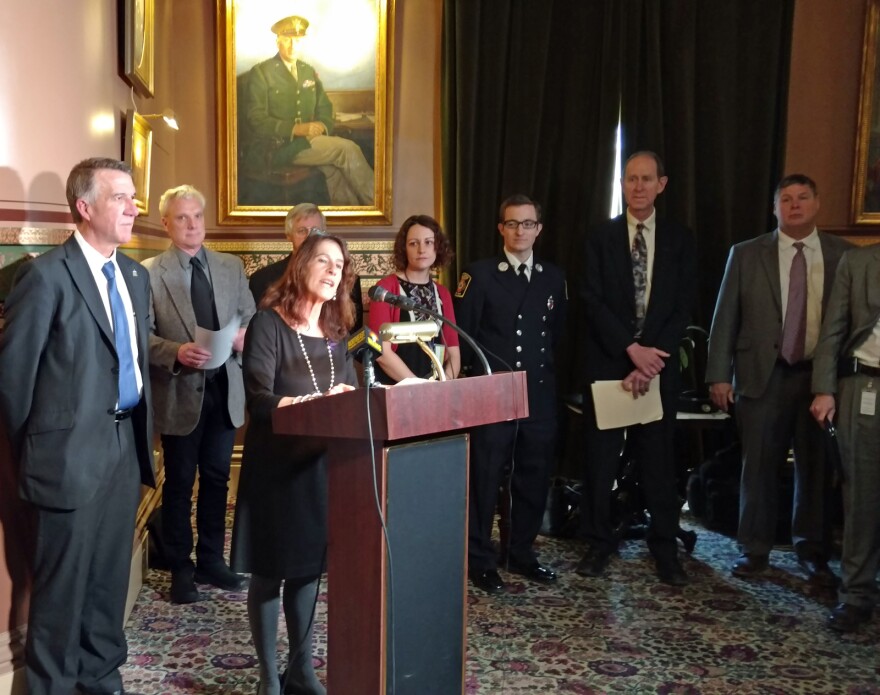Donning purple ribbons and small cards with the number 107, dozens of advocates gathered at the Statehouse in Montpelier this week for Vermont’s second annual Opioid Awareness Day.
There were 107 opioid-related deaths in Vermont in 2017. Republican Governor Phil Scott created the Opioid Coordination Council in January 2017. Members of that council joined him, advocates and those in recovery to discuss the crisis and ongoing work toward prevention, treatment, enforcement and recovery.
Vermont Director of Drug Prevention Policy Jolinda LaClair noted while support and awareness is growing as stigma wanes, continuous work to stem the addiction crisis is needed. “It takes time for strategies to affect systemic change. And it takes time to change attitudes, behaviors, and the generational cycles of addiction which impact every region of our state. We must share and hear the stories from parents, spouses, siblings, friends, neighbors and professionals. The stories that make us feel and respond with greater urgency and much greater compassion.”
Governor Scott said addiction has touched every community and family in Vermont. "Vermont has been a leader in addressing this crisis but our work is far from over. The availability of cheap and increasingly dangerous drugs like Fentanyl continues to present enormous challenges.”
Williston Fire Department Senior Firefighter and advanced EMT Prescott Nadeau said while first responders’ goal is to save lives, they often encounter denial from addicts. “The initial reaction of surprise and confusion when we give an overdose victim Narcan can rapidly change to frustrated anger. We haven’t saved their life. We’ve ruined their high or brought them back to reality. My colleagues tell me heartbreaking stories of overdose victims they revived once only to be called back a second and even a third time in the same day. The hardest thing that many first responders will tell you is acknowledging that we can only help them so much.”
Vermont Public Safety Commissioner Tom Anderson said while progress is being made, the ultimate solution is eliminating demand. “The overprescribing of opioids is what got us into this problem. And the fact that we are now taking steps to reduce the number of opioids that are being prescribed statewide is really I think the first step in bending this curve so that we are reducing the demand for these drugs. I also want to echo if this crisis, if this epidemic, hasn’t touched you consider yourself really lucky.”
According to the Vermont Department of Health, while the number of fatalities involving fentanyl has more than doubled since 2015, the number of deaths involving a prescription opioid has been consistent over the same period of time.







